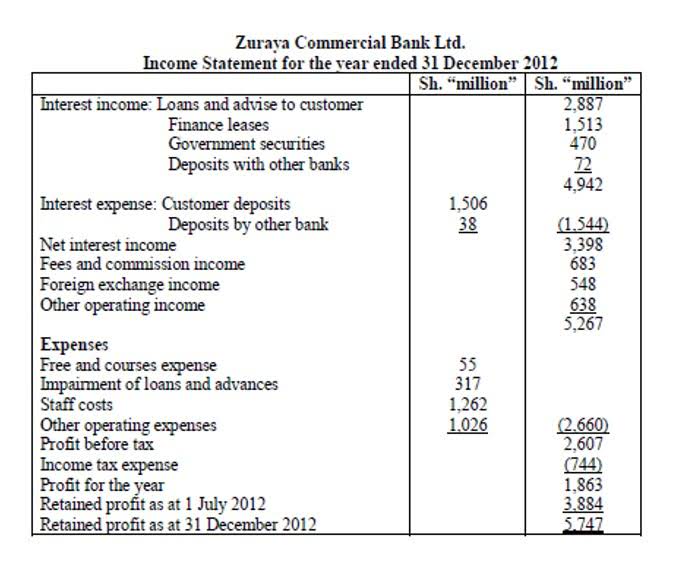
A company that declares a $1 dividend, therefore, pays $1,000 to a shareholder who owns 1,000 shares. If the stock is overvalued, you may want to hold onto cash dividends, even if you plan on reinvesting the money in the future. Usually, a company issues stock dividends when it is short of cash or facing liquidity challenges. Therefore, stock dividends are a useful option that satisfies both of these purposes for the company. When investors receive qualified dividends, they enjoy lower income tax rates.
Stock Dividends vs. Cash Dividends: Some Key Differences
- A company that declares a $1 dividend, therefore, pays $1,000 to a shareholder who owns 1,000 shares.
- However, unlike cash dividends, stock dividends are not reported as income but as capital gains and are taxed at a much lower rate.
- Research, including studies by DeAngelo and DeAngelo and Ferris, Jayaraman, and Sabherwal, shows dividends’ big impact.
- It’s money that shareholders earn in relation to the shares they hold that goes straight to the bank.
- In general, special dividends are rare but larger than ordinary dividends.
In simple words, a company is distributing what is already earned by the company. These earnings would have already been reflected in the share prices. As calculated above, the cash dividend received was $75, and the value of shares post the event was $1,725.
- This ensures that the company’s shares do not flood the market immediately and bring down its value.
- This makes them appealing for investors who want quick access to funds.
- The stock trades at a significant discount to its estimated fair value.
- In the United States, they are subject to up to 20% federal withholding taken directly off the top.
- However, they may not provide immediate income and can dilute the value of existing shares if the company’s overall value doesn’t increase.
- Investors need to consider the tax implications of receiving dividends.
What is your current financial priority?

Reliable dividend payments can attract investors looking for lower-risk options. Regular dividends suggest that the company has enough profits to reward its shareholders. A commitment to paying dividends can also boost investor confidence. More investors may decide to buy shares, improving cash dividends and stock dividends the company’s image in the market. This can lead to greater stock price stability and potential appreciation.
Wait! Rates are rising, is your portfolio ready?

And, even if a company does pay dividends, the amount can fluctuate from year to year. For information pertaining to the registration status of 11 Financial, please contact the state securities regulators for those states in which 11 Financial maintains a registration filing. There is nothing wrong with this procedure, except that a closing entry must be made to close the Dividends Declared account into Retained Earnings. As a result of this entry, the ultimate effect is to reduce retained earnings by the amount of the dividend. The declaration date is the date on Partnership Accounting which the board of directors declares the dividend.

- It can most easily be thought of as a company’s total assets minus its total liabilities.
- To figure out the proportion, divide the total dividend paid for the year by the total net income (70k/100k).
- The rate of return on your original investment to acquire the underlying asset will rise with time as dividends rise over time.
- In addition, stock exchanges or other appropriate securities organizations determine an ex-dividend date, which is typically two business days before the record date.
- Schedule monthly income from dividend stocks with a monthly payment frequency.
- Some companies offer shareholders the option of reinvesting a cash dividend by purchasing additional shares of stock at a reduced price.
- If the stock is overvalued, you may want to hold onto cash dividends, even if you plan on reinvesting the money in the future.
Let us assume PQR Company had substantially high profits for the current financial year and decided to distribute dividends to gross vs net its shareholders. Mr’ C’ owns 150 shares bought at $15 per share, making his total investment $2,250. It is because the stock price tends to fall due to cash dividend payments. Simply put, it is a return (money) paid to the shareholders for the investment made in the organization’s shares.
Advance Your Accounting and Bookkeeping Career

The retained earnings section of the balance sheet reflects the total amount of profit a company has retained over time. After the business accounts for all its costs and expenses, the amount of revenue that remains at the end of the fiscal year is its net profit. Cash dividends are a type of dividend paid out by companies (to their shareholders) on a per-share basis. As is evident by the name, these are paid out directly in cash to the investors. Cash dividends are given out on a periodic basis, like monthly, quarterly, etc. Rather than choosing between those two options, you might favor investing in a firm that rebuys shares to remove those shares from the market.